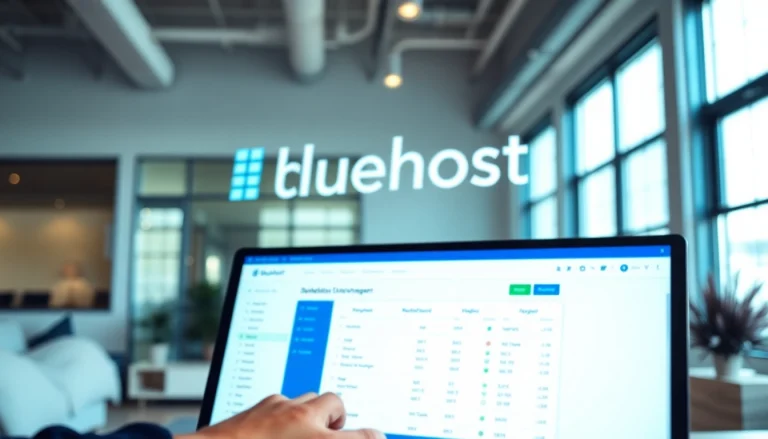
Understanding Temporary Email
What is Temporary Email?
Temporary email, often referred to as disposable email, enables users to create temporary email addresses for short-term use. These addresses can receive emails and typically self-destruct after a predetermined period or after receiving a certain number of messages. The primary function is to provide anonymity and privacy for activities that do not require a long-term commitment to an email account. A user can create a temporary email address and utilize it for sign-ups, downloads, or accessing services without exposing their personal email address.
The Importance of Using Temporary Email
In an age where privacy is paramount, using a temporary email enhances security by reducing the risk of spam, phishing scams, and unwanted promotional content. By using a disposable email address, individuals ensure that their primary email accounts remain uncluttered and secure, shielding them from potential data breaches associated with sign-up forms and less reputable websites.
Common Uses for Temporary Email
Temporary emails are versatile and can be employed in various scenarios including:
- Online Sign-Ups: Facilitate quick register processes for websites and services where users may not want to divulge their main email.
- Receiving Verification Codes: Useful for two-step verification processes that require email confirmation without revealing personal information.
- Trial Services: Ideal for signing up for trials of software or apps, minimizing ongoing communication.
- Downloading Content: Allows users to gain access to resources such as eBooks or whitepapers without the risk of spam.
How to Create a Temporary Email
Step-by-Step Guide to Setting Up Temporary Email
Creating a temporary email address is a straightforward process. Here’s how to do it:
- Select a Temporary Email Service: Choose a trusted platform that provides disposable emails.
- Generate an Address: Click on the option to create a new email. The service will generate a random email address.
- Use the Address: Copy this email address and use it for whatever service or purpose you need.
- Access Incoming Mail: Visit the website where you created the temporary email to view incoming messages.
- Delete or Let It Expire: Once you have finished using it, either delete the address or let it expire automatically.
Choosing the Right Temporary Email Service
When selecting a temporary email provider, consider the following factors:
- Reputation: Look for services that are well-reviewed for privacy and security. User feedback can be a good indicator.
- Features: Some services offer enhanced features such as email notifications, support for multiple emails, and retention times.
- User Interface: Ensure the service has an intuitive and user-friendly interface for easy navigation.
- Privacy Policy: Review the privacy policy of the service to understand how your data will be handled.
Security Tips for Using Temporary Email
While temporary email addresses offer added security, consider these tips to further enhance your online safety:
- Always verify the reputation of the service you choose before inputting any sensitive information.
- Avoid using temporary emails for important communications or financial transactions.
- Regularly update your passwords if using temporary emails as a backup for primary accounts.
- Monitor unused temporary accounts for any suspicious activity, even if they are self-destructing.
Benefits of Using Temporary Email
Protecting Your Privacy
Privacy protection is one of the core benefits of using temporary email. Users can operate online without revealing their true identities. This is especially beneficial when engaging with unknown websites or entities.
Reducing Spam and Unwanted Emails
By utilizing a temporary email address, users can effectively manage and eliminate spam. Any unwanted communication directed to the temporary address can be ignored, leaving their main inbox spam-free and organized.
Convenience for One-Time Registrations
The convenience of using a temporary email for one-time registrations cannot be overstated. Users can quickly sign up for services, receive confirmation, and then disregard the email without any lasting impact on their main accounts.
Best Practices for Managing Temporary Email
When to Use Temporary Email
Temporary email addresses are best used in scenarios where anonymity is preferred or required, particularly when interacting with new or untrusted online services, such as:
- Online forums and blogs
- Downloadable resources like eBooks or software
- Social media sign-ups for promotional offers
How Long to Keep Temporary Emails
The lifespan of a temporary email varies by service; some will self-destruct after being unused for a set period, while others allow users to manage retention times. Generally, keeping emails available for a few days to a week is sufficient for most purposes.
Switching Between Temporary Email Providers
It may be beneficial to switch between different temporary email services to reduce the risk of spam or security problems with a single provider. Regularly rotating the providers can also offer a fresh start for anyone experiencing excessive spam issues.
Advanced Strategies for Temporary Email Users
Integrating Temporary Email with Other Tools
Integrating temporary email with productivity tools and automation platforms can streamline your usage. For instance, setting up filters or combining with task management apps can enhance workflow efficiency.
Evaluating the Effectiveness of Your Temporary Email
Tracking the effectiveness of own temporary email usage may involve noting how often it successfully blocks spam or gauging response rates from sign-ups. This analysis can guide future strategies for utilizing temporary emails more effectively.
Future Trends in Temporary Email Usage
As privacy concerns grow stronger, the need for temporary email services may continue to rise. Advances in technology could lead to more sophisticated temporary email solutions, including AI that helps identify trustworthy sites or filters spam more effectively.






